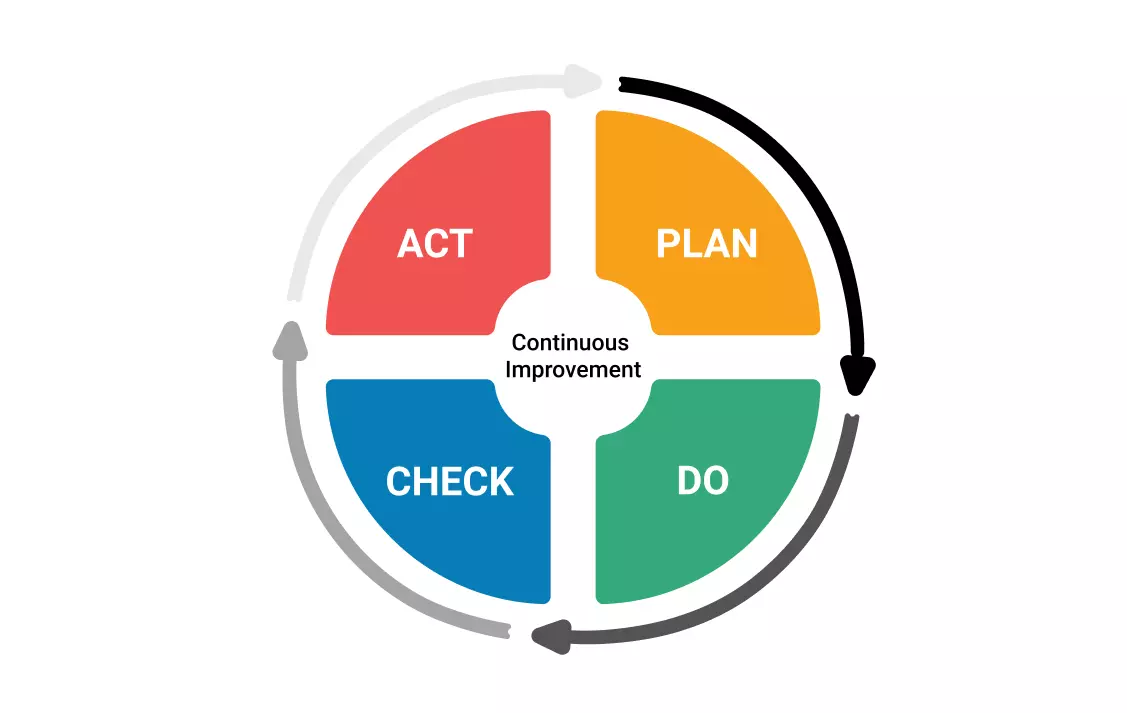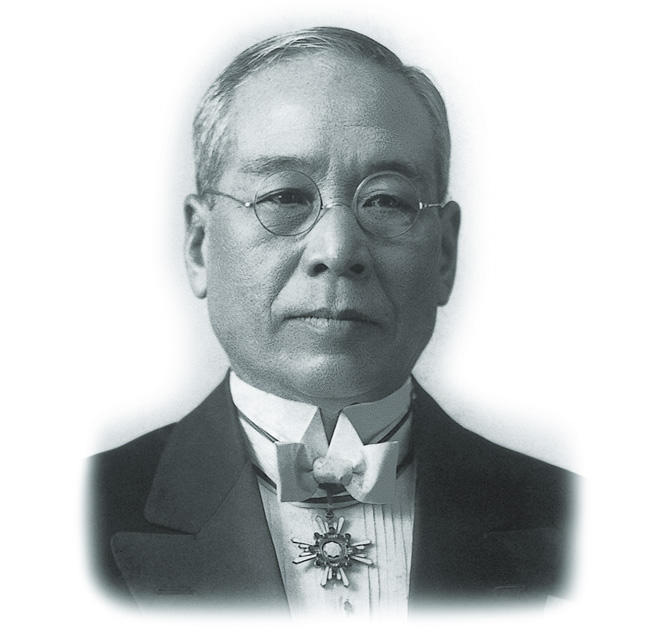Optimising Team and Projects Dynamics: The Kaizen Method applied for IT, Digital, Fintech, AI Professionals
In this article, I'll outline how you can enhance and transform your team's performance using the Kaizen approach. I'll share my own experience with implementing Kaizen, guide you through its application, and highlight its benefits across various departments, including IT, Digital, and Fintech. Rest assured, this methodology is universally applicable.
Kaizen is a Japanese term that means "change for the better" or "continuous improvement."
In the context of business management and manufacturing, Kaizen refers to activities that continuously improve all functions and involve all employees from the CEO to the assembly line workers.
It also applies to processes, such as purchasing and logistics, that cross organizational boundaries into the supply chain.
Key Principles of Kaizen
Improving Productivity and Working Standards: The primary objective is to improve productivity, reduce waste, and eliminate inefficiencies.
Cultivate staff engagement. Enable team members to pinpoint challenges and concerns, thereby instilling a feeling of accountability in the transformation journey, it is commonly accomplished by forming specialized groups tasked with gathering and disseminating knowledge across the enterprise.Involving All Employees: Kaizen engages workers at all levels to contribute suggestions for improvement.
Pinpoint Challenges: Gather insights from team members across all levels to highlight areas needing enhancement or offering potential gains. For multiple concerns, compile an organized checklist to tackle each systematically.Standardization: New, more efficient ways of doing tasks are continuously established.
Craft a Targeted Strategy: Cultivate an innovative mindset by inviting staff to contribute inventive solutions. Assess all submitted ideas and choose one or more optimal strategies for execution.Quality Over Quantity: The focus is often on quality improvement, which, in turn, usually leads to production efficiencies and cost reduction.
Test the Proposed Approach: Engage all relevant parties in the rollout of the selected solution, launching pilot projects or limited trials to gauge its viability.Incremental Change: Unlike some strategies that advocate for radical changes or complete overhauls, Kaizen is about small, incremental changes.
Assess Results: Consistently track advancements and involve frontline employees to maintain their ongoing engagement. Review the effectiveness of the changes made and uncover avenues for further refinement.Data-Driven: Improvements are often based on quantitative data, metrics, or Key Performance Indicators (KPIs).
Scale Successful Initiatives: If the outcomes are favourable, consider expanding the successfully tested solution across the entire organization.Customer-Oriented: Ultimately, the goal is to improve the product or service quality, leading to higher customer satisfaction.
Commit to Iterative Improvement: Reapply these seven steps routinely to evaluate new solutions as circumstances change or new challenges emerge.
Kaizen Events
A Kaizen event, also known as a Kaizen blitz or Kaizen burst, is a short-term project with the aim of quick and radical improvements. A cross-functional team comes together to rapidly develop solutions to existing problems.
A Kaizen blitz, sometimes referred to as a "Kaizen sprint," is a concentrated, time-sensitive effort aimed at conducting a productive idea-generation session that zeroes in on a specific issue to refine an existing workflow.
Incorporating principles from Lean and Six Sigma methodologies, a Kaizen emphasizes targeted focus and rapid execution.
By assembling a suitable team dedicated to resolving a specific challenge, organizations can achieve meaningful breakthroughs that quickly lead to process optimization.
Usually lasting between three to five days, a Kaizen event may be short-lived but should be integrated into a company's ongoing strategy for systematic process betterment.
A typical Kaizen Event often follows this sequence of steps:
1. Define explicit goals and offer the necessary background information.
2. Assess the existing situation and formulate an enhancement strategy.
3. Execute the outlined improvements.
4. Review the impact and troubleshoot any emerging issues.
5. Summarize the findings and pinpoint any subsequent steps that are needed.
This cyclical Kaizen methodology is often referred to as PDCA (Plan, Do, Check, Act) and is extensively employed to elevate business performance.
This structure provides a systematic and empirical method for implementing changes and achieving targeted results.
PLAN: Outline the intended improvements and set objectives.
DO: Execute the necessary steps for betterment.
CHECK: Evaluate success against your initial metrics.
ACT: Refine or modify your implemented changes.
As you navigate through each stage, the cycle continues, symbolizing ongoing improvement. Once you return to your initial benchmark, you take into account your past improvements to strategize the next ones.
However, it's crucial to understand that this is merely the manifestation of Kaizen. While continuous improvement serves as the external motivator, Kaizen acts as the internal catalyst that propels you to consistently question existing practices and strive for betterment.
Case History: Kaizen Principles in Toyota
Toyota Motor Corporation stands as an international frontrunner in the automotive sector, distinguished for its groundbreaking manufacturing techniques and commitment to ceaseless betterment. Toyota has woven Kaizen into its fabrication methods to elevate the effectiveness, calibre, and safety of its business activities.
In Toyota's Kaizen model, the full spectrum of employees, from senior leadership to assembly line staff, is actively involved.
Everyone is encouraged to consistently pinpoint areas that could benefit from refinement and participate in the enhancement initiatives. This is achieved via Kaizen forums, where workers convene to talk through possible refinements, and through Kaizen seminars, which serve as platforms for employees to generate and actuate innovative concepts.
The incorporation of the Kaizen ethos has significantly contributed to Toyota's industry achievements.
Its streamlined manufacturing framework enables it to fabricate top-quality automobiles at a more competitive cost structure compared to rivals. Moreover, the ongoing improvement cycles have resulted in superior safety protocols and a decrease in both resource wastage and energy utilization.
Toyota's unwavering dedication to the Kaizen philosophy has been instrumental in its prosperity and stands as a compelling case study for the transformative power of incremental changes. Its Kaizen paradigm offers valuable insights for other enterprises aiming to optimize their operational procedures.
Exploration of Kaizen Methodology at McDonald's
One exemplary case of a business harnessing the power of Kaizen is McDonald's, a global leader among restaurant chains. Since the late 1980s, McDonald's has been applying Kaizen principles to enhance its services and offerings.
One crucial domain where McDonald’s has harnessed the Kaizen philosophy is its supply chain management. By using Kaizen, the company has refined its logistics and minimized wasteful practices, the resultant efficiencies have not only lowered operational costs but also elevated the quality of customer service by reducing order processing times.
Moreover, McDonald’s has leveraged Kaizen to optimize its food preparation and delivery processes, streamlining these aspects has allowed the company to bring down food production costs while simultaneously elevating the pace and quality of its services.
Customer service is another sector where McDonald's has employed Kaizen.
The company has introduced technological solutions and streamlined workflows, notably in order-taking and payment processing, to enhance the speed and efficiency of customer interactions.
Beyond optimizing operational aspects, McDonald's has extended the use of Kaizen to its organizational culture and work environment.
Initiatives like employee recognition programs, mentorship schemes, and team-building exercises have been launched to boost staff engagement and cultivate a spirit of ongoing betterment.
In summary, McDonald's deployment of Kaizen has resulted in comprehensive improvements in its operational workflows, product offerings, and corporate culture. The benefits manifest in reduced operational costs, superior customer service, and a more harmonious work setting. Thus, Kaizen has been instrumental in McDonald’s emergence as one of the most successful global restaurant chains.
Applications
Manufacturing: Lean Manufacturing and Kaizen
In manufacturing, Lean systems prioritize efficiency and the elimination of waste. The Japanese philosophy of Kaizen, "change for better"—fits like a glove into this approach.
Companies often hold Kaizen events, short-term activities where employees from various departments gather to identify problems and propose solutions.
The immediate goal might be as simple as reducing the time it takes to produce a single item. However, the long-term impact can be revolutionary, affecting everything from inventory and logistics to employee satisfaction.
Software Development: Agile and Kaizen
The software development world has its own methodologies for rapid, continuous improvement, often grouped under the Agile umbrella.
Agile and Kaizen are spiritual cousins, as both aim for continuous, incremental improvement. In Agile, this might manifest in regular "sprints" where teams aim to improve functionality or performance issues.
The retrospective meetings in Agile are essentially a form of Kaizen, where the team reflects on what went well and what didn't, to make the next sprint more efficient.
Healthcare: Kaizen for Patient Outcomes
Healthcare is an industry where the stakes are incredibly high.
The application of Kaizen in healthcare goes beyond just cutting costs or speeding up services; it can directly impact the quality of patient care.
For example, a Kaizen initiative might focus on reducing the amount of time it takes to admit a patient, which in turn could lower the risk of complications. Similarly, Kaizen can be applied to improve diagnostic accuracy, treatment plans, and even staff well-being.
Personal Development: Self-Improvement through Kaizen
On a personal level, Kaizen can be a lifestyle choice.
The principle encourages continuous, small, incremental changes for betterment.
Whether you are trying to learn a new skill, improve your fitness, or even become more organized, applying Kaizen means setting achievable goals and taking manageable steps every day towards achieving them.
Over time, these small changes accumulate into significant improvements.
Steps to Implement Kaizen in a Digital Environment
Identify Areas for Improvement:
Use data analytics and team feedback to find inefficiencies or bottlenecks.Plan:
Develop a plan that outlines the changes to be made, who will make them, and how success will be measured.Execute:
Implement the changes, whether it's a code deployment, a new digital tool, or a change in digital strategy.Measure:
Collect data to understand the impact of your changes.Analyze:
Review the data to determine whether the change was beneficial.Standardize:
If the change is successful, make it a new standard practice.Iterate:
Once one improvement has been successfully implemented, look for the next one.




